I’m excited to share my Top 10 new and enhanced features for Revit 2017, including improvements to navigation, sheet views, revisions, and overall performance.
(At the end of this article I will provide a list of the additional improvements and enhancements for all disciplines associated with Autodesk Revit 2017.)
1) Text Editor and layout engine - Multidiscipline enhancement
The new Text Editor and layout engine gives you “what you see is what you get” editing and new features to help communicate your design to clients.
You can edit in canvas and have text set to uppercase, subscript, or superscript. You can add spaces between bulleted points, multi-level lists, indenting, undenting, and incrementing numbers.
Revit text is now measured in the same way as AutoCAD, enabling better import and export to AutoCAD.
- Edit in-canvas
- Set all text to upper- or lowercase
- Add spaces between bullets
- Create lists with multiple levels, indents, and numbers
- Easily import and export to Autodesk® AutoCAD® software
2) Create a Tag with a Calculation - Multidiscipline enhancement
Annotation tags now allow calculated values and obey pin restrictions. You can create a tag with a calculation in it to use with any tag type. When you reposition an element, a pinned tag remains in place while its leader adjusts to accommodate the new position of the element.
- Allow calculated values
- Obey pin restrictions
- Use with any tag type
- Pinned tag does not relocate
- Pinned tag does not change its shape
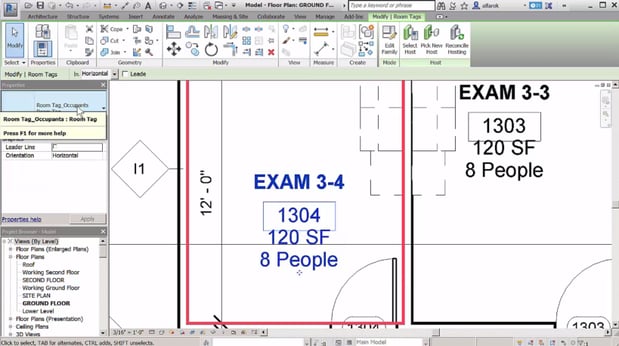
3) Schedule Improvements - Multidiscipline enhancement
Schedules have been enhanced in a few areas. In order to simplify the reuse of schedules, you can create a schedule view template. Schedule view templates include parameters for Fields, Filter, Sorting/Grouping, Formatting, Appearance, and Phase Filter.- Create a Schedule View template
- View templates include parameters for fields, and more
- Display minimum and maximum values for calculations
4) Depth cueing
Depth Cueing lets you add depth to your elevations and sections to create stunning visuals in order to better communicate your design.
This functionality works with shadows on, realistic, hidden lines, sketchy lines, ambient shadows, anti-aliasing and more. When you turn it on, you can control where the depth starts and stops, placing the limits according to your design.
You have this level of control over the effect in order to meet your design needs. Designed for architects, depth cueing adds pop to your elevations and sections in both architecture or coordination views.
- Add depth to elevations and sections
- Control the depth
- Compatible with hidden lines, sketchy lines, ambient shadows, anti-aliasing, and more
5) Improved railing hosts - Multidiscipline enhancement
Now you can host railings on shaped edited floors, roofs, and on the top of walls with a single sketch line.
This provides architects with the ability to do a single sketch and host the rail as it is intended to be built on site.
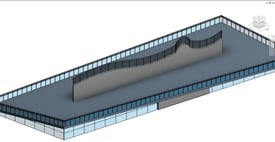 Model rails that follow the slope, curvature, or elevation of elements
Model rails that follow the slope, curvature, or elevation of elements- Top of walls
- Floors
- Roofs
6) Column split
In order to improve workflows and extend usability for fabrication models, the Split tool can now split vertical columns at the desired point. This gives you greater model accuracy, which allows you to create a precise design intent definition that includes connections.
- More accurate models
- Steel connections placement
- More accurate bill of materials
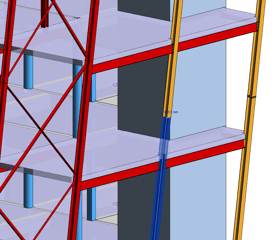
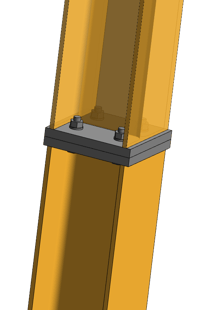
7) Improved structural foundations – Structural Engineering enhancement
Now you can attach structural columns to isolated foundations and footing. Thanks to this feature, the column length adjusts in response to changes to the foundation level.
- Attach structural columns to foundations
- Automatic column length adjustment
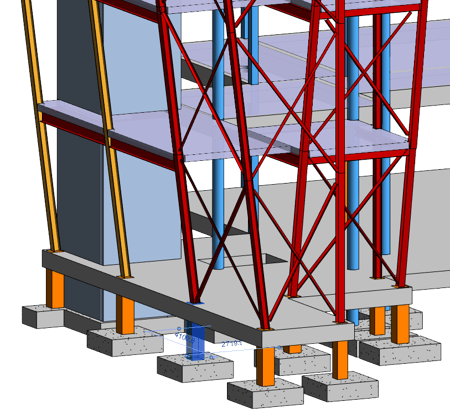
8) Hanger improvements – MEP Engineering enhancement
More flexible hanger capabilities have been added to facilitate detailed support planning.
Now you can have multi-tiered Trapeze hangers, enabling you to support one hanger with another. You also have the ability to adjust the rod position on the bearer to coordinate with structure locations or avoid other services. Support for cantilevered elements enables you to extend the bearer on a hanger to support additional services. The improvements to hangers also enable you to place a hanger in free space.
- Trapeze with tiered layouts
- Tiered layouts
- Adjust bearer and rod
- Extend bearer and modify rod position
- Fitting support



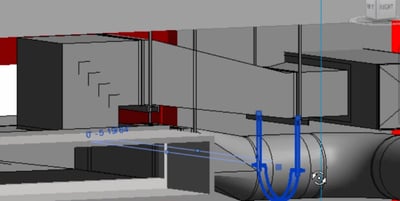
9) Design to fabrication optimization – MEP Engineering enhancement
The new tools and enhancements enable you to quickly iterate from a design level of detail model to a fabrication level of detail model. To prepare a model for detailed coordination modeling and construction, you can now convert design level of detail model elements to construction level of detail elements using the Design to Fabrication tool.
The Design to Fabrication tool will present a list of potential related services for selected design level of detail duct and pipe elements. Reviewable Warnings help you to identify straight segments that are longer then their specified standard lengths. After you optimize to standard lengths, you can adjust the location of short segments and extend fittings, such as elbows and tees, to consume the remaining short pieces.
Reviewable Warnings help you to identify straight segments that are longer then their specified standard lengths. After you optimize to standard lengths, you can adjust the location of short segments and extend fittings, such as elbows and tees, to consume the remaining short pieces.
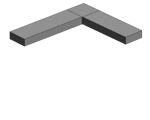
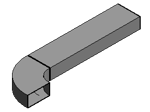

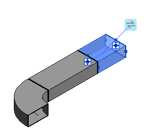
- Design to Fabrication
- Service conversion
- Optimize lengths
- Review for standard straight lengths
- Short segment optimization
- Reposition part and adjust extension
10) Part modeling improvements – MEP Engineering enhancement
Now you can help increase modeling productivity and accuracy by automating layout with detailed options.
The new Route and Fill tool enables you to select two open endpoints of a run, and Revit will give you options to connect them.
You can preview which fittings will be inserted in each option. Additionally, you can specify which fittings are required and force solutions that incorporate only those fittings. Additionally, the Cut Into option of Route and Fill enables you to connect tee and tap scenarios.
- Route and Fill
- Automate layout with detailed options
- Connect two open endpoints of a run
- Specify which fittings are required
The Trim and Extend tool works the way you would expect in Revit, and will also take into consideration conditions and connectivity rules when inserting fittings.
When you know you want a specific fitting in a particular scenario, but do not know the dimensions of the fitting, you can place the fitting and stretch it into place using Quick Connect.
- Trim and Extend tool
- Conditions and connectivity rules
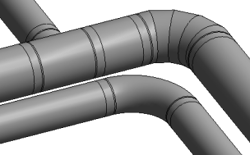
- Quick Connect
- Stretch fittings
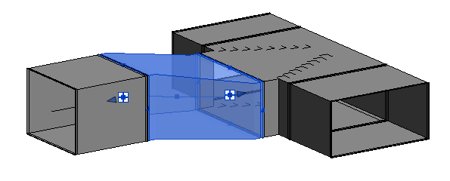
Additional Features and Enhancements to Revit 2017
|
Architecture/platform enhancements
|
Structural engineering enhancements
|
MEP design & fabrication enhancements
|

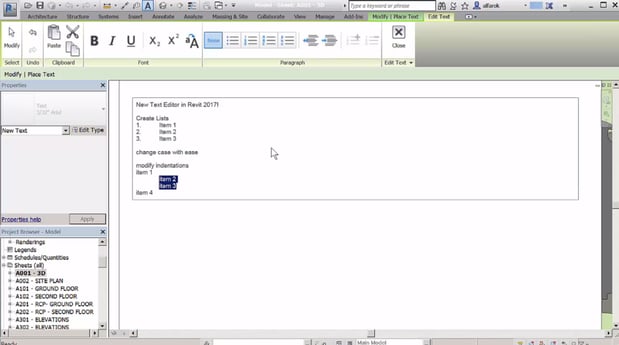
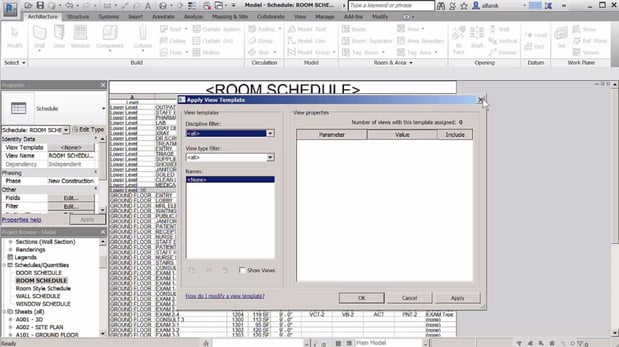
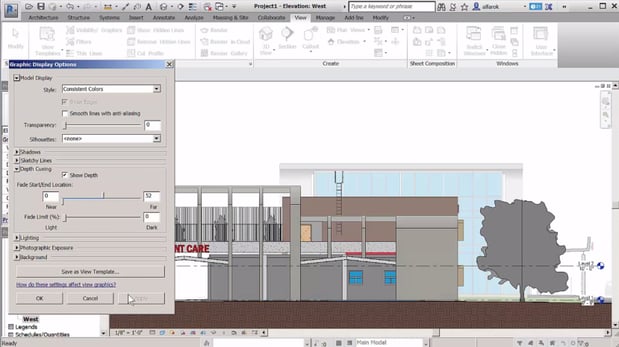


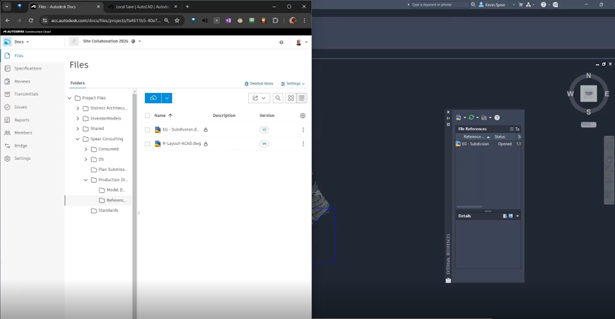

Comments